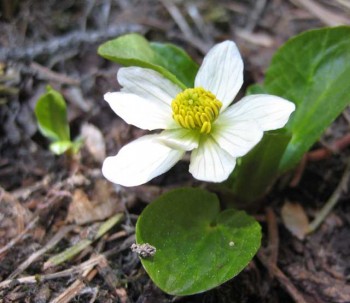
There is a new edible wild plant in the fridge, one I have yet to try, and about which there is some debate as to its edibility. That plant is elkslip, aka mountain marsh marigold (Caltha leptosepala), and today I will conduct Part I of my experiment eating it.
Don’t Slip, Elks!
I found the elkslip growing in and around wet areas in the forest near our house (at approximately 10,500 feet in the Rocky Mountains outside of Fairplay, Colorado).
I first read about this plant, which is also referred to as “Western marsh marigold,” in wild edible plants guru Euell Gibbons’ 1973 book, Stalking the Faraway Places and Some Thoughts on the Best Way to Live. (What a title!)
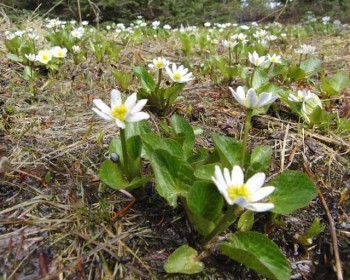
He relates: “One of our reference books said that Western marsh marigold was too bitter to be used for food, but I suspected the writer had tried it in midsummer at low altitudes. The Eastern marsh marigold, Caltha palustris, is also too bitter for food at that time, but is delicious if gathered in very early spring.” Gibbons goes on to report eating C. leptosepala cooked with mountain sorrel to impart a vinegary flavor, and concludes that it is “excellent.”
In the Lone Pine Field Guide to Plants of the Rocky Mountains (1998), Kershaw, et. al. state: “Some sources warn against eating marsh-marigolds, but many writers recommend this plant as a potherb, and some say they have used the flowers and young leaves in salads with no ill effects. Usually the leaves are boiled until tender and served with butter or in cream sauce. …The roots are also cooked and eaten, and they have been likened to sauerkraut.”
It sounded promising, but the part about “some sources warn against eating marsh-marigolds,” merited further attention, seeing as I am about to experiment on myself (and Gregg) without much information to go on.
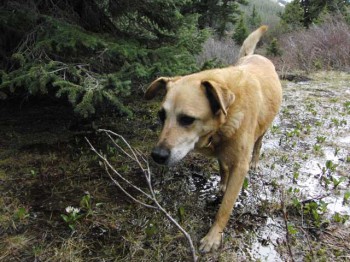
A Warning from Cousin Cowslip
In Edible Native Plants of the Rocky Mountains, H.D. Harrington (1967) reports eating the young leaves and buds of C. leptosepala raw in salads.
However, Thayer warns against raw consumption of the related C. palustris (aka cowslip, or Eastern marsh marigold) due to protanemonin, a poisonous constituent it contains that is dispelled by boiling (Turner & Sczawinski, 1991, qtd. in Thayer, 2006).
Thus I’ve decided to heed the warning from elkslip’s cousin cowslip, and boil my first elkslip (C. leptosepala) leaves before I conduct the edibility experiment.
But first, a lip test.
The Lip Test
My friend Ryan told me about the lip test—where you rub a suspected edible on your lip and wait to see if it gives you a bad reaction prior to consuming it.
“Lip test? That’s genius!” I replied excitedly.
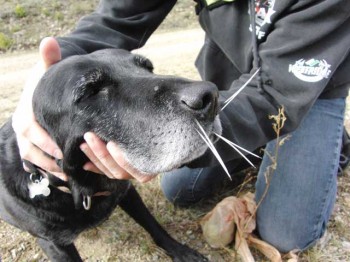
“I can’t believe you’ve never heard of the lip test,” he told me, rolling his eyes, years of wild edible plant consumption under his own belt. This is intimidating to me, because here I thought I knew everything there is to know about eating wild plants;) Ryan also told me about a friend of his who ate one plant thinking it was another and almost went into cardiac arrest. Holy crap.
So I conducted my elkslip lip test at 7:20 AM this morning, and as of 9:20 AM, I am pleased to report no ill effects.
Gathering and Cleaning Elkslip
The young elkslip leaves are from a hike we took two days ago on June 20 with 3 dogs we are watching. I found the plants in a wet, forested area where high mountain runoff flows. (Actually, the dogs found them, right before Sagey nosed a porcupine.)
I cleaned the leaves well before the aforementioned lip-rubbing, because Harrington (1967) says, “Care should be taken to wash the leaves thoroughly since the plant grows under marshy conditions and various small organisms may cling to the surfaces.”
A Panoply of Seasons in the High Country Means More Foraging Possibilities
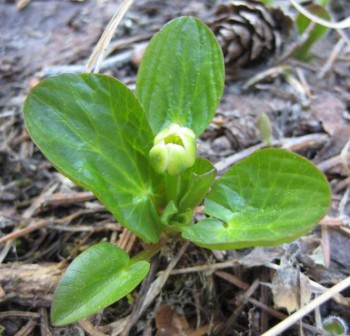
Euell Gibbons is such a good, old-fashioned storyteller. His book reads like the account of the foraging grandfather I never had. Last summer I read half of Stalking the Faraway Places aloud to Gregg in the car, and it inspired me to take to the field to find more plants I didn’t yet know.
After stating that marsh marigold is probably best in early spring, Gibbons describes the high country like this: “Here we could choose our seasons. Out on the bare knolls it was early summer. In the meadow at the foot of the snowbank it was late spring. Only a few feet away, at the melting edge of the snowfield, it was earliest spring. I gathered my Caltha just as the first leaves were being uncovered by the melting snow.”
It’s a good point, eloquently stated, for I do find many of my high country wild edibles at various stages of growth depending where they are located. One has no choice but to conclude that this expands foraging possibilities for high country dwellers. Awesome!
Elevation-Specific Foraging
In addition to proximity to snow, shade versus sunlight, and other growing conditions, elevation can make a big difference as to what plants can be foraged when and where. In Best-Tasting Wild Plants of Colorado and the Rockies (1988), Cattail Bob Seebeck tells us, for example, that pennycress can be found from 4,000 to 10,000 feet, and that it flowers in May and June at lower altitudes but also in July at higher altitudes.
I find pennycress at 11,000 feet, putting it outside of Cattail Bob’s range, quite possibly a symptom of climate change over the past 10+ years—but the point is that elevation is also a contributing factor as to in what growth stage you find your plants. Too bad Bob’s book is out of print. It’s excellent for elevation-based foraging!
Okay I Gotta Go Cook Now
Okay, enough is enough, then. It’s long past time for me to go make myself some creamed elkslip. I will report on the results in a subsequent entry. Thanks for staying tuned to the saga!
Updated 3.2.21
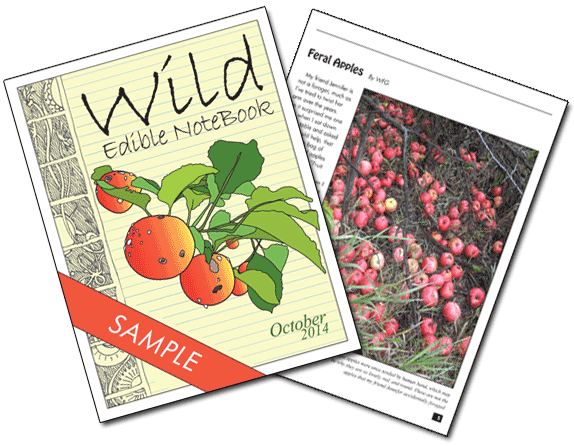
Ouch, those porcupine quills look like they hurt! How did it taste?
Hi Melissa! Tasted great, but I’m a little gassy. More on that tomorrow!
Hey there. I just stumbled across this post while looking for more information about the flowers I just found yesterday on a hike up to a secluded lake I just took.
http://olympicwanderer.com/2011/06/hidden-lake/
I really like eating wild edibles and was wondering if they had any use besides just looking pretty… it seems they do. I’ll have to give them a taste next time I go up there.
It’s strange. I’ve lived here for years and yesterday was the first time I’ve seen Elkslip. Keep up the good work, Aron